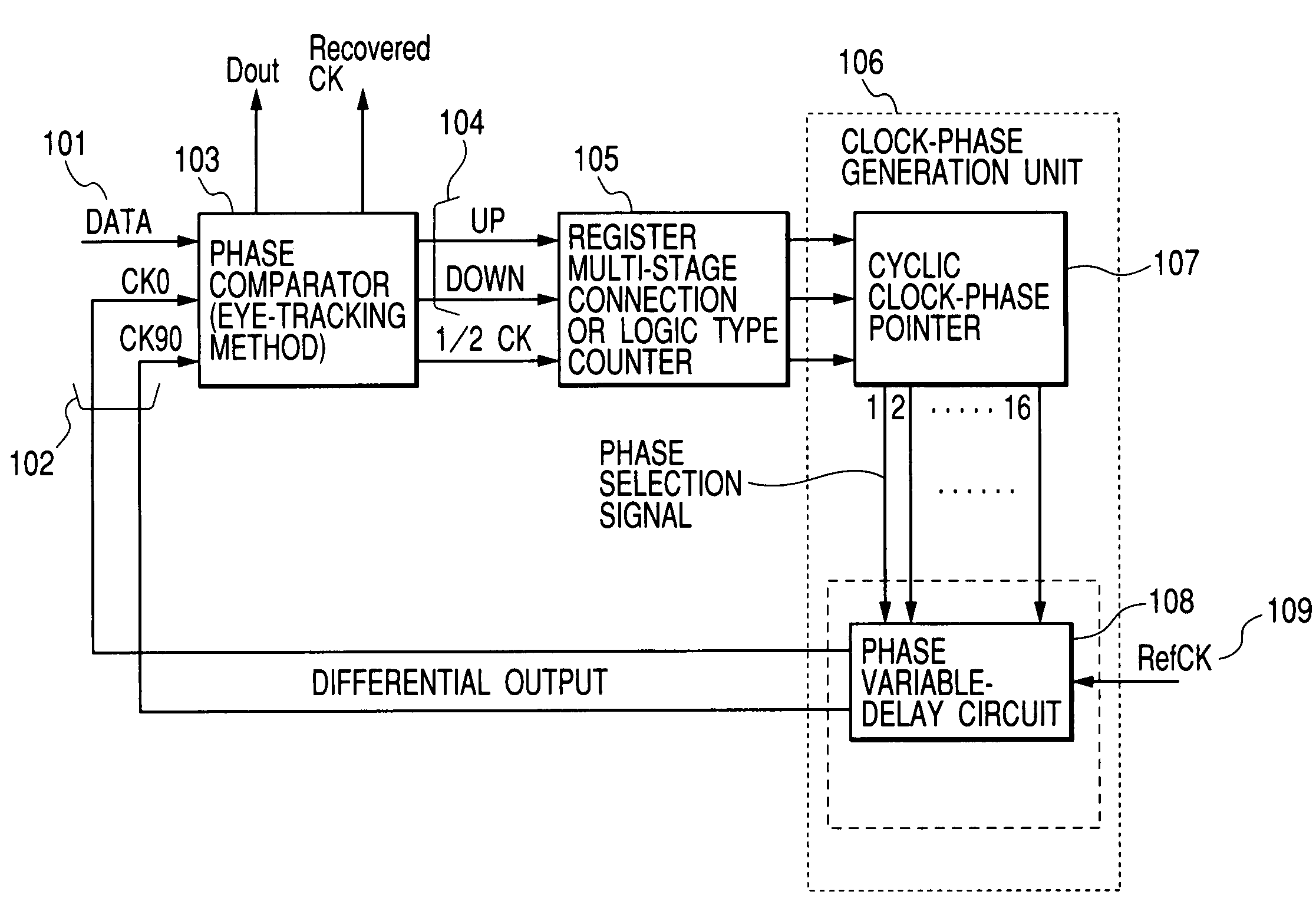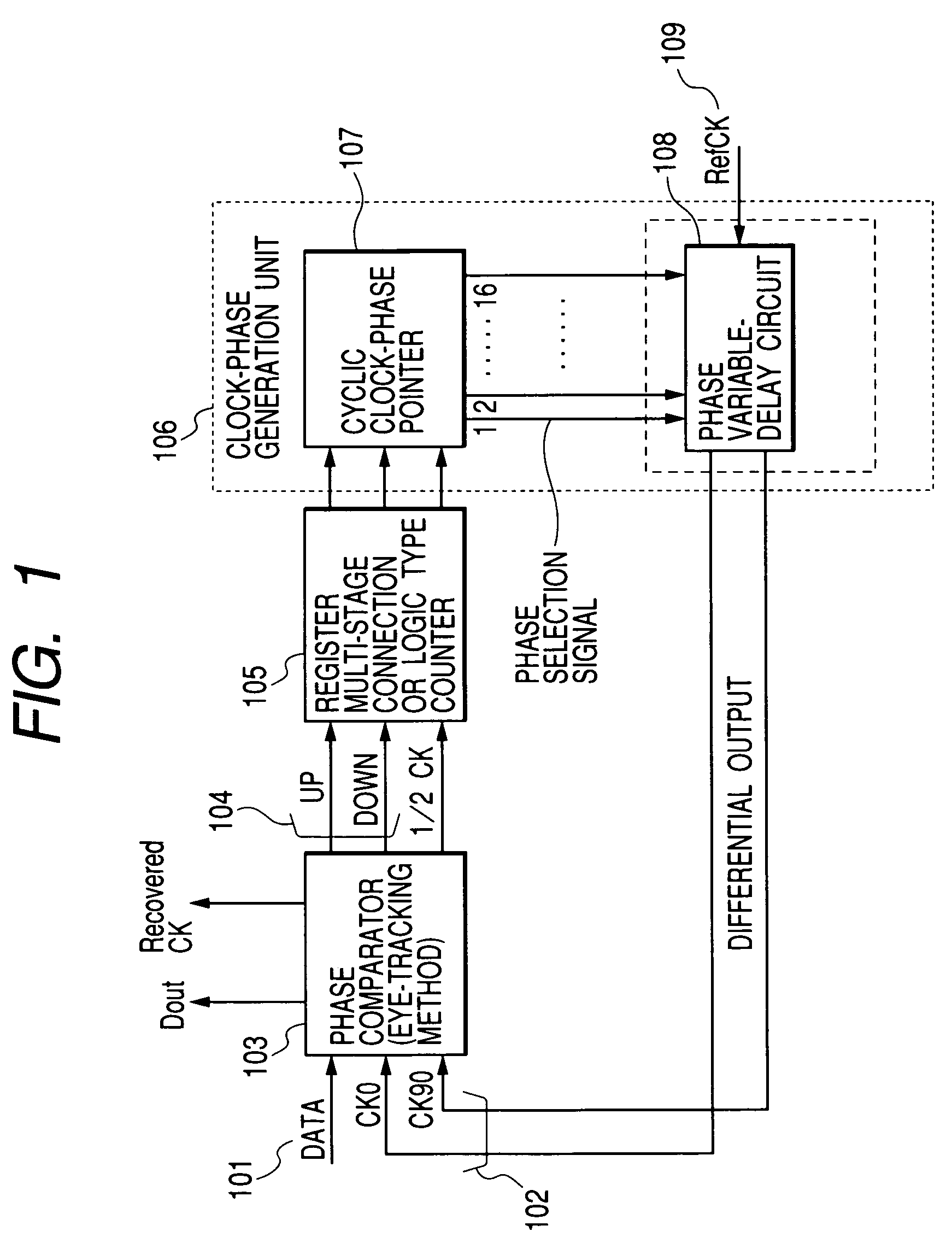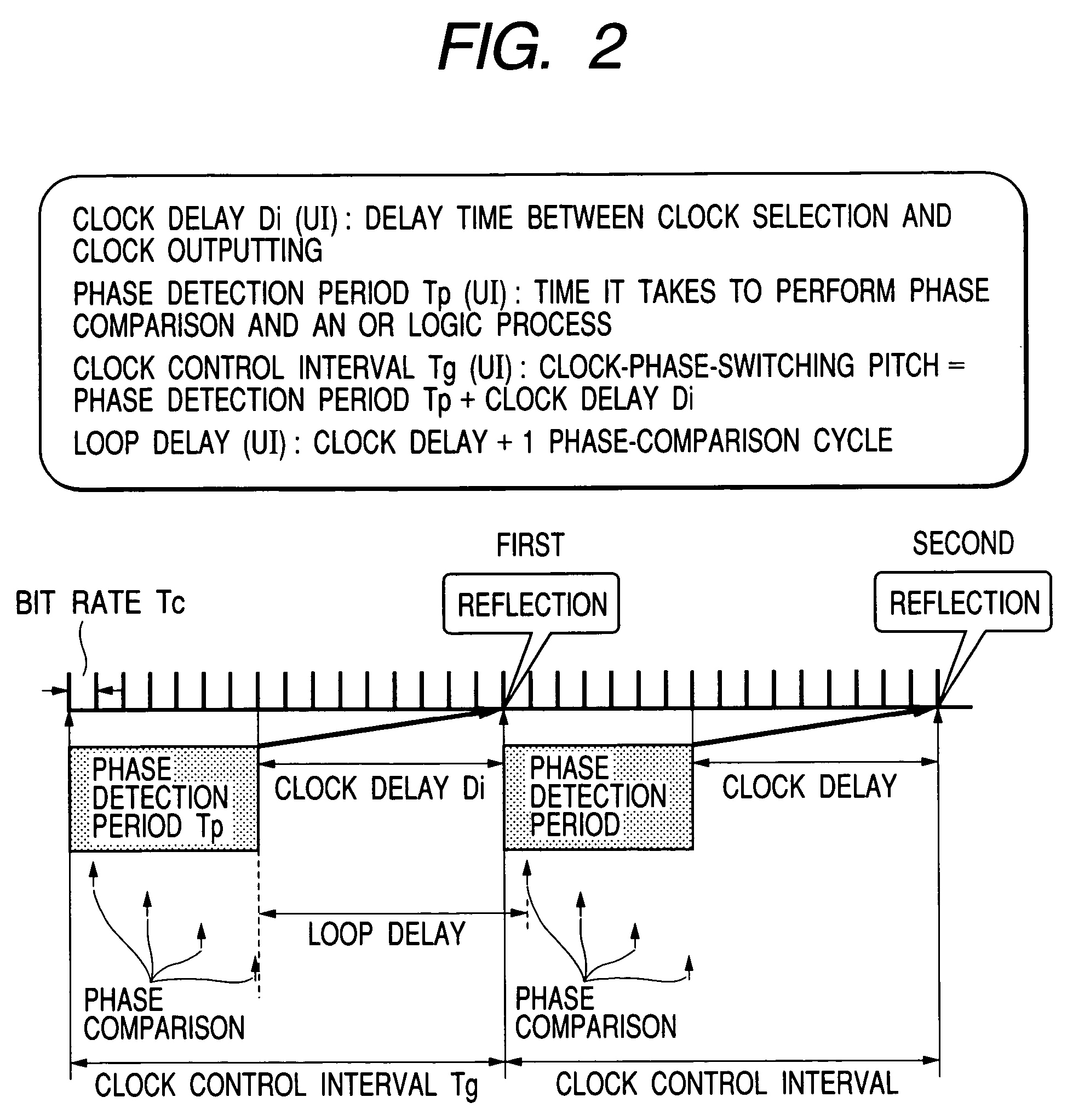Clock and data recovery method and digital circuit for the same
- Summary
- Abstract
- Description
- Claims
- Application Information
AI Technical Summary
Benefits of technology
Problems solved by technology
Method used
Image
Examples
first embodiment
[0081]FIG. 1 is a block diagram showing the configuration of a digital-control type clock data recovery circuit implemented by the present invention. The digital-control type clock data recovery circuit is also referred to hereafter simply as a digital clock data recovery circuit.
[0082]As shown in FIG. 1, the digital clock data recovery circuit comprises: a phase comparator 103 for comparing the phase of input data 101 with the phase of a data recovery clock signal 102 generated internally and outputting shift directions of the phase of the data recovery clock signal 102 as UP and DOWN signals 104; a register multi-stage connection OR logic type counter 105 for controlling a frequency at which the UP and DOWN signals 104 are fed back to a means for determining the phase of the data recovery clock signal 102; and a clock-phase generation unit 106 for generating an output phase of the data recovery clock signal on the basis of signals output by the counter 105.
[0083]The clock-phase ge...
second embodiment
[0123]FIG. 12 is a circuit diagram showing a phase variable-delay circuit 1200 implemented by the present invention. As shown in FIG. 12, the phase variable-delay circuit 1200 typically comprises buffers 1201, composition circuits 1202, 8-1 selectors 1203 shown in FIG. 13 and CMOS level conversion circuits 1204. The buffers 1201 are each a memory for storing 0-degree / 90-degree clock inputs. The composition circuits 1202 form a unit for generating 8 signals having phases different from each other from 2 signals having phases different from each other. The 8-1 selectors 1203 form a unit for treating the 8 signals with phases different from each other as 16 signals having 16 different selectable phases and selecting a phase from the 16 phases. In order to output a 0-degree differential clock signal and a 90-degree differential clock signal, the 8-1 selectors 1203 and the CMOS level conversion circuits 1204 are each designed as a dual component. The 0-degree differential clock signal an...
third embodiment
[0130]FIG. 14 is a block diagram showing the configuration of a digital clock data recovery circuit implemented by the present invention.
[0131]As shown in FIG. 14, the digital clock data recovery circuit comprises: a phase comparator 1403 for comparing the phase of input data 1401 with the phase of a data recovery clock signal 1402 generated internally and outputting a shift direction of the phase of the data recovery clock signal 1402 as UP and DOWN signals 1404; a register multi-stage connection OR logic type counter 1405 for controlling a frequency at which the UP and DOWN signals 1404 are fed back to a means for determining the phase of the data recovery clock signal 1402; and a clock-phase generation unit 1406 for generating an output phase of the data recovery clock signal on the basis of signals output by the counter 1405.
[0132]The clock-phase generation unit 1406 comprises a cyclic clock-phase pointer 1407 and a digital-control type phase variable-delay circuit 1408.
[0133]Si...
PUM
 Login to View More
Login to View More Abstract
Description
Claims
Application Information
 Login to View More
Login to View More - R&D
- Intellectual Property
- Life Sciences
- Materials
- Tech Scout
- Unparalleled Data Quality
- Higher Quality Content
- 60% Fewer Hallucinations
Browse by: Latest US Patents, China's latest patents, Technical Efficacy Thesaurus, Application Domain, Technology Topic, Popular Technical Reports.
© 2025 PatSnap. All rights reserved.Legal|Privacy policy|Modern Slavery Act Transparency Statement|Sitemap|About US| Contact US: help@patsnap.com



